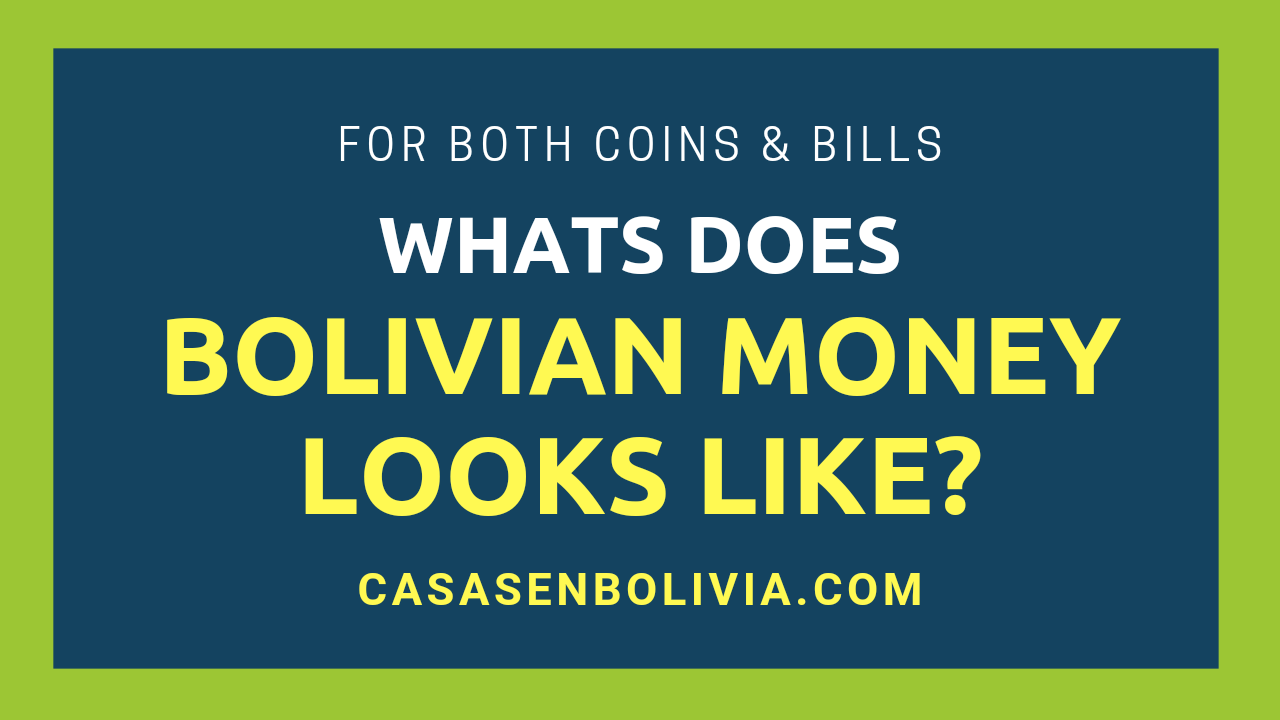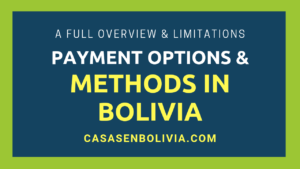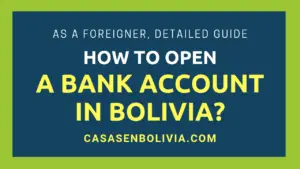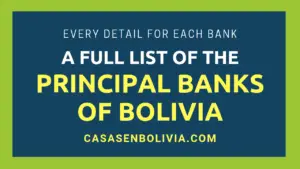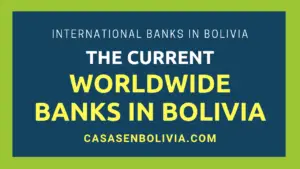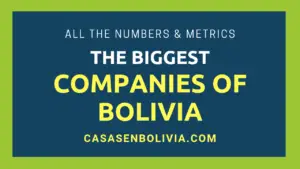Last Updated on February 15, 2025
Bolivian currency hasn’t changed significantly in recent decades. Although a new design was introduced in 2018, it retained most of the appearance and features of the previous one. Bolivian money adheres to all rigorous, modern standards for currency design and production.
Bolivian money resembles most other modern currencies worldwide. This currency includes both coins and bills in 11 denominations. Coins are primarily made of stainless steel, with some copper versions. Bills feature a unique color for each denomination and incorporate all standard modern security measures.
In this article, we’ll show you what Bolivian money currently looks like, including all its details and features, such as color, texture, images, and the historical figures depicted on both bills and coins. We’ll also cover the security features it incorporates.
There Are Two Versions of the Boliviano (Bs) Currency
The previous design of the Bolivian currency was in circulation for several decades until a recent, not drastically different design was introduced. *Currently (2022), both designs are still valid* for use in Bolivia.

While the previous design focused on depicting colonial history from the 15th to 18th centuries, as well as heroes of freedom, memorable places, and dates related to Bolivia’s independence, the latest design emphasizes *indigenous and local heroes and locations*, portraying Bolivia as a multicultural and multiethnic nation.
This reflects the differing perspectives, ideas, and philosophy that the current government, still supported by a significant portion of the population, has been promoting, aiming to make Bolivians “proud again of their own heroes, culture, and history” rather than colonial figures, which the government views as “imposed historical figures.”
A) The Previous Version
This version was in circulation for approximately 35 years, since 1987. It was introduced following the worst hyperinflation the country experienced in the mid-1980s, resetting the Bolivian currency and coinciding with the establishment of the “Republic of Bolivia” as a democratic nation.
B) The Current Version
The current version has been rolled out gradually since 2018, starting with the Bs.10 denomination. By 2019, all denominations were circulating in the country. As mentioned, this new design is a hallmark of the new “Plurinational State of Bolivia” and the current government.
As of November 2022, *both versions of Bolivian currency (cash) are valid* for transactions anywhere in the country. We anticipate that both versions will remain valid until at least 2025.
The 11 Denominations of the Bolivian Currency (Boliviano, BOB, Bs)
1) 10 Cent Coin (c. 10)
The 10-cent Bolivian coin is quite small, with a diameter of approximately *half an inch*. It comes in two versions: stainless steel and copper. It weighs around 2 grams and has a purchasing power equivalent to 1.3 US cents.
What Can You Buy with c. 10?
With a 10-cent coin in Bolivia, you can’t buy much, *perhaps a small piece of candy at a kiosk or a 5-second phone call*. However, it’s still important as many goods are priced in increments like Bs2.60, Bs3.30, or Bs5.10, so you’ll sometimes need it for making change.
2) 20 Cent Coin (c. 20)
The 20-cent Bolivian coin is still tiny but slightly larger than the 10-cent coin, with a diameter of around 7/10 of an inch. It’s only available as a stainless steel coin. It weighs approximately 4 grams and has a purchasing power equivalent to about 3/5 of a US nickel (3¢ USD).
What Can You Buy with c. 20?
With a 20-cent coin in Bolivia, you can’t purchase many items, perhaps some types of candies, a 10-second phone call, or chewing gum. However, it’s also important for making change and is widely used.
3) 50 Cent Coin (c. 50)
The 50-cent coin in Bolivia is slightly heavier and larger. It’s only available in a stainless steel version and has a diameter of around 8/10 of an inch. It weighs approximately 5 grams and has a purchasing power equivalent to one US nickel plus two pennies (7¢ USD).
What Can You Buy with c. 50?
With a 50-cent coin in Bolivia, you can purchase some essential items, such as a piece of bread, a small bag of water, a 30-second phone call, almost any type of candy or chewing gum, and similar items.
4) 1 Boliviano Coin (Bs 1)
The Bs1 coin is perhaps the *most commonly used coin in transactions* in Bolivia. It’s considerably larger and heavier than the smaller denominations. This coin is about 1 inch in diameter, weighs around 8 grams, and is available only in a stainless steel version. Its purchasing power is approximately equal to 1 US dime plus 1 nickel (15¢ USD).
What Can You Buy with Bs 1?
With a Bs1 coin in Bolivia, you can purchase several essential items, such as two pieces of bread, access to a public restroom, public transportation in some areas, and even one of the following: 3 bananas, 1 apple, 2 oranges, a personal-sized soda or coke, among other things.
5) 2 Bolivianos Coin (Bs 2)
The Bs2 coin is the largest and heaviest coin currently circulating in Bolivia, and it’s also widely used. It comes in two sizes: one with the same dimensions as a Bs1 coin, and another slightly larger version with a diameter of about 1.1 inches. It weighs nearly 12 grams and *has corrugated edges* as its main distinguishing feature.
Its purchasing power is approximately equal to 3 US dimes (30¢ USD) and it is only in stainless steel version.
What Can You Buy with Bs 2?
You can purchase many small, everyday items with a Bs2 coin in Bolivia. For example, public transportation, a 1-minute local phone call, any type of candy, even small snacks from food kiosks. You can also buy: 4 pieces of bread, 7 bananas, 1 pound of rice, 2 personal-sized cokes, etc.
6) 5 Bolivianos Coin (Bs 5)
The Bs5 coin is unique in several ways. It has a *two-color design, combining two materials*: copper at its center and stainless steel around the edges. This coin is small, around 7/10 of an inch, but quite heavy and thick, weighing about 9 grams. It also has jagged and corrugated borders.
Its purchasing power is approximately equivalent to 7 US dimes, or a half-dollar plus a quarter (75¢ USD). *It’s the last Bolivian coin* and the one with the highest purchasing value.
What Can You Buy with Bs 5?
With a Bs5 coin, you can buy many things, such as two or three public transportation tickets, a light breakfast, a *salteña* (a traditional Bolivian snack link), an empanada, or one of the following: 10 pieces of bread, a 2-liter bag of milk, a 2-liter bottle of water, a 2-liter bottle of soda, a hamburger in some places, or 10 apples, 15 bananas, 10 oranges, etc.
7) 10 Bolivianos Bill (Bs 10)
This is the first bill, and the one with the lowest purchasing power, in the Bolivian economy. *It’s a predominantly blue and white bill* featuring Bolivian indigenous personalities and historically significant places. Its purchasing power is around one and a half dollars ($1.50).
All currently valid Bolivian bills, in both previous and latest versions, *have a size of 5.5in x 2.75in (14cm x 7cm)*.
What Can You Buy with Bs 10?
With a Bs10 bill, you can purchase more substantial items, such as a typical meal in some locations (not in tourist areas, where you’ll need at least Bs50 for a meal), a phone card for mobile data and calls, or a short-distance taxi or Uber ride. You can also buy a breakfast, a 3-liter bottle of soda, water, or milk, 35 bananas, 10 apples, etc.
8) 20 Bolivianos Bill (Bs 20)
This is a low-value bill that is heavily used in commercial transactions, along with the Bs10 bill, in Bolivia. *It’s a predominantly orange and white bill* depicting both indigenous and colonial figures, as well as important historical and relevant places, and flora and fauna symbolic of the country.
Its purchasing power is slightly under three dollars ($3).
What Can You Buy with Bs 20?
With a Bs20 bill, you can buy lunch at most restaurants and food stalls or take a long taxi or Uber ride (although they tend to charge significantly more to foreigners). You can also purchase a fast-food meal in places like Burger King and even travel between La Paz and Oruro.
9) 50 Bolivianos Bill (Bs 50)
The Bs50 bill represents a considerable amount of money for Bolivians, as it can often cover a day’s expenses. *It’s a predominantly purple and white bill* featuring numerous Bolivian symbols, important historical figures, and other symbolic elements. Its purchasing power is approximately 7 dollars ($7).
What Can You Buy with Bs 50?
This bill allows Bolivians to purchase many essential items; it can even cover a full day’s expenses for many locals. With it, you can buy an intercity bus ticket, substantial meals at good restaurants, and even a night in inexpensive, low-quality hotels.
10) 100 Bolivianos Bill (Bs 100)
This is a high-value bill, comparable in its significance for Bolivians to a $100 bill for Americans, as it represents a considerable amount of money within the Bolivian economy. *It’s a predominantly red and white bill* depicting both indigenous and colonial figures, as well as significant locations and representative flora and fauna of the country.
Its purchasing power is around 15 dollars ($15).
What Can You Buy with Bs 100?
Bolivians can typically purchase several important items with a Bs100 bill, such as all the groceries needed for a week for one person, a bus ticket from La Paz to Santa Cruz, the best meals in the best restaurants, subscriptions to courses, two cinema tickets, some tourist souvenirs, etc.
11) 200 Bolivianos Bill (Bs 200)
This is the highest-value bill currently circulating in the Bolivian economy, as Bs200 represents approximately 10% of the minimum Bolivian wage. It’s *a predominantly brown and white bill* that, again, features both native and colonial figures, as well as important tourist destinations like the Sun Gate and the “Monoliths” ruins in the town of Tiwanaku.
Its purchasing power is slightly under 30 dollars ($30).
What Can You Buy with Bs 200?
How to Identify Counterfeit Bolivian Currency
Like any other modern currency in the world, Bolivian currency has several security features you can use to determine whether a bill or coin is *genuine or counterfeit*.
The 3 Steps to Avoid Being Fooled by Fake Bolivian Money
The Bolivian government has recently established guidelines to quickly identify counterfeit currency. *It consists of three steps*: look, touch, and tilt.
A) Look
First, you should examine the bill *and try to identify the very clear watermark *of the bill’s featured personality and the bill’s denomination *printed within it*. If it appears diffuse, faint, or negligible, it’s a strong indication that it might be a counterfeit bill.
B) Touch
All Bolivian currency bills have raised relief printing on:
- The bill’s denomination number
- The bill’s featured personalities and images
- The bill’s text
- The bill’s lines and bands
If the bill you’re holding feels too smooth to the touch, like ordinary paper, or *has minimal relief*, it’s almost certainly a counterfeit bill.
C) Tilt
If you tilt any Bolivian currency bill, you should observe a very *sharp and noticeable change in the color and sheen of the bill’s security thread*. If this thread is absent, appears weak or unusual, or doesn’t change color as described, the bill is almost certainly counterfeit.
In the new Bolivian bill design, this same change in both color and sheen can also be observed in the image representing fauna within the bill.
Conclusions:
In this guide on the appearance of Bolivian money, you’ve seen that it’s very similar to currencies from most countries around the world, featuring both coins and bills spread across 11 denominations, ranging from the 10-cent coin to the Bs200 bill.
You’ve seen that in Bolivian currency, all coins are made of stainless steel, except for a copper version of the 10-cent coin and a mixed copper and stainless steel version of the Bs5 coin.
You’ve also learned that all Bolivian bills are 5.5in x 2.75in (14cm x 7cm) in size, and each denomination has its own unique color, as follows: Bs10 bill: white and blue; Bs20 bill: white and orange; Bs50 bill: white and purple; Bs100 bill: white and red; Bs200 bill: white and brown. All bills also have two designs that are still circulating simultaneously.
You’ve discovered that Bolivian money incorporates all the most important modern security features, such as watermarks, various types of relief printing, and color and sheen changes in their security threads and other images. Additionally, you’ve seen the purchasing power of each denomination and the items you can commonly buy with each.
Finally, you’ve learned some measures to avoid receiving counterfeit money, as recommended by the Bolivian government, by following three steps: look, touch, and tilt. By doing so, try to identify the watermarks, the raised printing, the security thread, and the color-shifting and sheen effects present in all genuine Bolivian bills.
We hope this information has been helpful. If you’d like to know which currency is best to use in Bolivia, comparing Bolivianos with dollars, euros, and other currencies, as well as the appropriate amounts of each, please visit our dedicated guide on this topic: The Best Currency for Bolivia: All the Facts and Details to Know.
CasasenBolivia.com, information on living, working, investing, and traveling in Bolivia.

